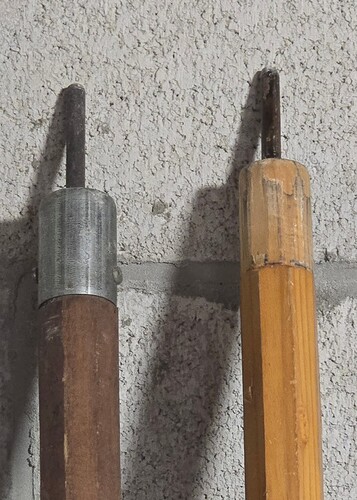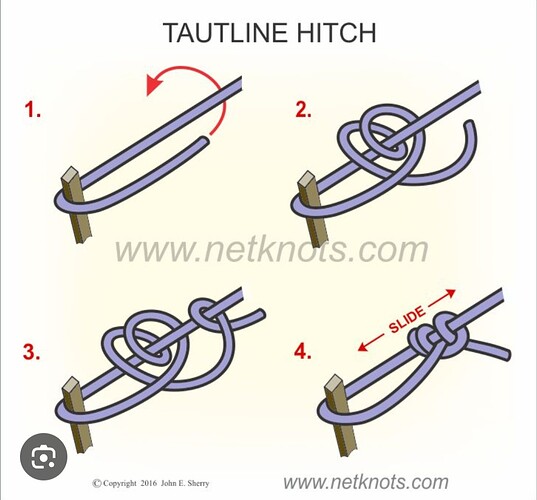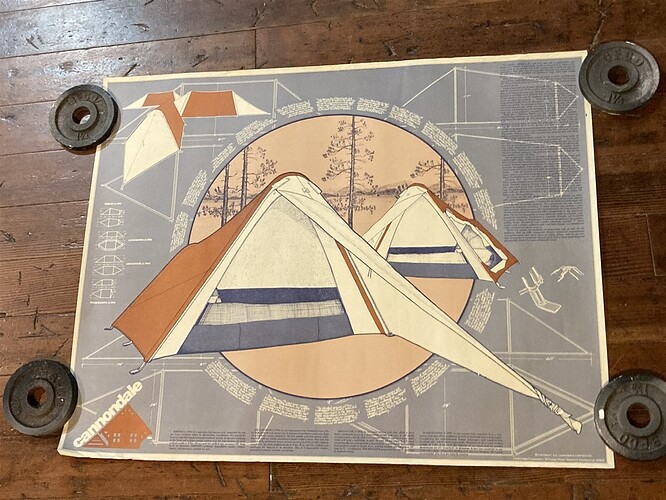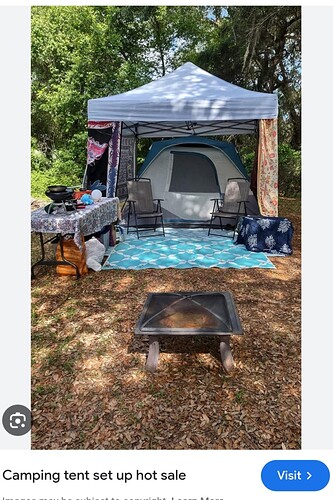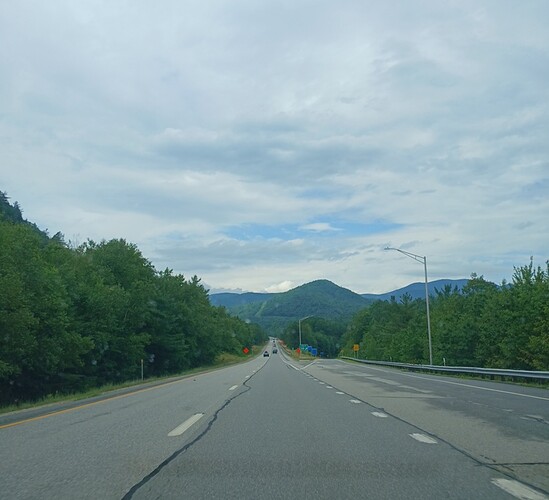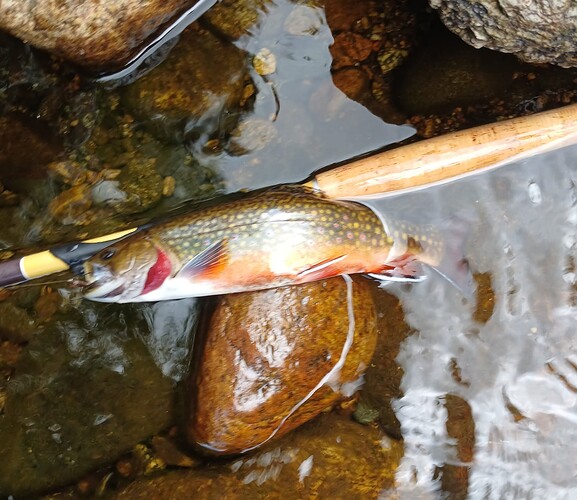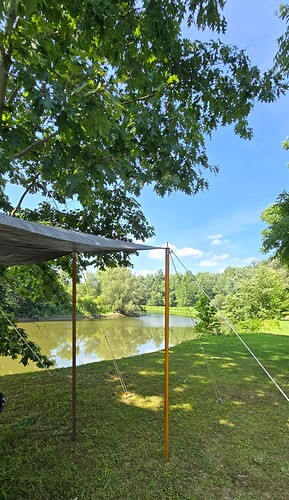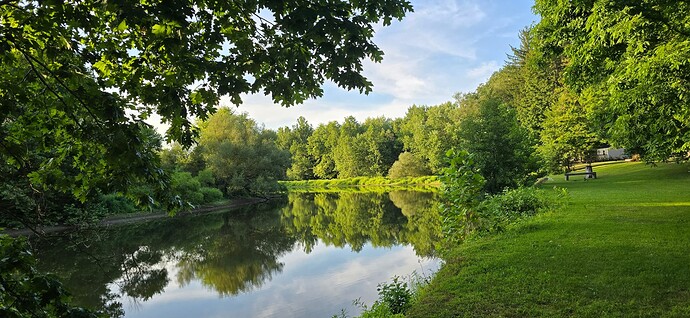Skeeter season doesn’t bother me much because they don’t much like me. I’ve never met that northern kind of black fly and don’t care to.
The upside of the rain…. Or as my paddling partner from Belgium likes to remind me
“No rain, no river”
Absolutely! The NE whitewater contingent should be very happy right now. I think at Deerfield River, western MA, today is the beginning of “Flowfest” with Zoar Outdoors outfitters.
Also, rain (or the weather disturbance precipitating it) generally will stir up the ocean for the surfing contingent. This morning, we got 4’ swells with 10 second intervals and offshore wind. Good stuff to play on for the surfing contingent! Heading out soon to get some. ![]()
-sing, the happy camper
This time of year around NE, the blackflies and mosquitos “tag team”. The blackflies tend to come out in the daytime and hangout in the sunlight. The mosquitos are in the shade during the day and out about at night. Sometime in late June, the no-seeums will start showing up, tho’ barely visible to our eyes but irritatingly felt on the skin…
Yin/Yang, life has to have balances to be better appreciated and enjoyed. ![]()
-sing
My experience with every tent is that the rainproofing either flakes off or it gets sticky and smells like vomit. My favorite combination is an 8 x 10 nylon fly with a waterproof ground cloth, big enough for two, with each using a military pup tent mosquito net tucked under the ridge rest to keep out flying and crawling things. Hiking stick with constrictor knot at the head for a center support and the other hiking stick crossing the main pole to lash upright backpack at the head. Backpacks (open front zipper panels are best) close off the tall side and serve as a lash point for the netting, while the foot and sides of the tarp get staked to guy lines, which keeps three sides of the tarp off the ground for ventilation. With proper site selection, the upturned ends of the ground cloth lets any water flow through without collecting.
After breaking down camp, the ground cloth can be properly wrapped around the sleeping bag and roped tightly to make a waterproof cover that remains dry if the sleeping bag is thrown into a lake.
A convenient way to carry rope for guy lines is to prepare segments by cutting a 50 or 100 ft length of rope into equal section of around 5 1/2 ft. By double folding two sections and tying in an overhand knot, each knotted section has two short 5 1/2 ft segments or a 10 ft segment if tied in an sheet bend. 100 ft gives about nine double bundles. The indvidual lengths are short enough to make lashings, and when combined, the segments make up a knotted but continuous 90 ft length of rope for securing boats, securing loads, clothes lines, hanging food, tent lines, etc. A short segment tied to a hiking stick, using constrictor knots, makes an adjustable sling for when you aren’t using it to aid walking.
Looking forward to a trip five-day camping trip, starting Thursday, at a private site on French Creek near Cambridge Springs, located south of Erie.
I haven’t found a tent that didn’t leak. While not as convenient as a modern tent with a built in floor, rain fly and mo-see-um netting, the tarp has never leaked, the open perimeter doesn’t trap condensation, and there is no bathtub floor to catch and puddle rainwater leaks.
Some of my favorite trips were rainy. I do look for forward to a dry setup and packing out. That’s not too much to ask for.
Regarding tents, I grew up camping in the Smokies. We had 4 man canvas tents that were framed with aluminum poles. We being our parents and my brother and I.
The waterproofing was only good for a couple of rainy days but my Dad insisted on staying longer. We spent many days sitting at a picnic table in a downpour under a tarp goingʻ stir crazy.
20 years later the Army took a bunch of us camping at Ft. Bŕagg in the rain. Each of us had a tent half. I was too long for the resulting tent and it dripped on my chest. Luckily it was hot.
One asset for pleasant camping is a large kitchen tarp. We used a 12 x 16 blue tarps for years before upgrading to a heavy duty 16 x 24 silver tarp with reinforced corners. Make 2"x2" x 6’4" octagon poles from straight 2x4s, pins from scrap galvanized chain link braces or spike nails, and end caps using chain link top rails or conduit (cut in sets of two using a pipe cutter to roll one end, but score the middle with the pipe cutter, then hacksaw the two pieces apart, to have one rolled end and a straight cut filed into a taper to hammer onto the other end).
Make guy lines with a fixed loop on one end and a taught-line-hitch on the other.
An adjustable aluminum center pole raises the center to shed water. Make a tapered circular wood block over the center pin; ease the top edge to protect the tarp from puncture. A 20 lb propane mast with a propane lamp fits under tarp for light and a hose taps the mast to fuel stoves or griddles.
Military Surplus stores sell 6" and 12" angle aluminum stakes; get a set of each for either soft of rocky soil. Lash poles to trees where possible. Great size to protect the kitchen, picnic table and still have sitting space for lounge chairs. Great place to.lisyen to the rythemic pitter patter of rain.
I used to backpack, including in the winter, with a couple who were both graduates of and trained guides for Outward Bound and they always used tarp arrangements. Though I did have to help them dig out one morning after we experienced an unexpected heavy wet snowstorm over Thanksgiving weekend on the North Country Trail and their rig partially collapsed under the load.
One unique tent brand that doesn’t have roof leakage or, even more significantly, condensation issues, was the line of them made for a few years by Cannondale. I still have one of their bombproof, though heavy, 2 to 3 person Susquehanna tents with a massive floorless vestibule designed (as one would expect from a bicycle-focused outdoor brand) to shelter a couple of bikes. I had owned their first model but my brother lost the poles when I lent it to him for a west coast backpacking trip – fortunately, a friend of mine lost their same model tent’s body so I was able to share what was left of mine with them (my brother had already paid to replace my tent with the newer model which, though a bit larger was less portable, being 8 lbs 5 oz rather than 7 lbs 3 oz.
The uniqueness of the Cannondales was that the fly was NOT waterproof but only uncoated dacron. The trick was that both it and the roof of the tent were joined together with a 3" structural band that created a sealed dead air space between the inner and outer layers once the well designed wind-shedding was tautly set up. Umbrellas are not made of waterproof fabric but shed water by having it roll off the tight surface. With the Cannondale tent, rain would hit the outer fly and mostly bead up or run off. Some would soak through but never would coalesce enough to create heavy drops – what small amounts did drip would simply run down the taut inner roof. The dead air space (tent was designed so the enclosure went all the way to the ground) kept the tent warmer. And since I used it a LOT in my 20s and up to my early 40s for winter backpacking, it never created any frost or condensation from body moisture inside the tent space. The tent breathed completely and there was not as abrupt a temperature differential between the occupation space inside the tent and that air gap to promote condensation. Always stayed warm and dry in it and the huge 7’ long by 5’ wide floorless triangular vestibule was excellent for cooking inside during bad weather, as well as for stashing damp and dirty gear outside the sleeping and refuge space. I have not used it in over 12 years – should set it up and check it out. Probably the coated floor (the only place that material was used) is sticky/smelly by now.
The tent, which looks like two ice cream waffle cones stuck together, has strongly tensioned arcing poles in the middle (where the tent and vestibule join) and at the tapered rear of the “cabin” half. It is pitched between two widely spaced “bow” and “stern” pegs with cam straps that can be gradually tightened as the tent loosens (as they all do after being pitched). VEry aerodynamic design and the only tent I have even used that was completely silent in high winds and never flapped.
The legendary and quirky Stephenson tents of the 1970s were also based on some similar design ideas.
Found a poster for sale on Ebay that shows the first Cannondale Susquehanna that I had, present one is about a foot wider at both pole positions:
You make a good point about that shelter in active snow. When I went winter camping, I used a dome tent and was fortunate for snow which shed, instead of rain because it leaked rainwater. I never managed to successfully waterproof any tent.
In all the searches for tents. I can’t recall ever seeing a Cannondale model. While doing a web search for the brand, I came across this setup.
I always considered those free standing tarps too small for camping, but it looks like the perfect solution for an extra layer of protection to keep a tent dry. That works for car camping, but not where transportation space is limited.
Interesting point about umbrellas and the cannondale design. Canvas has similar properties. In scouts, we used canvas wall tents. They typically remained dry as long as nobody started capillary action by rubbing against the inside during rain. However, large holes had to be patched. Those tents were at least 76 years old and still in great condition but heavy.
The troop had a charter that was over 100 years old. It unfortunately disbanded a few years ago and all of the well maintained gear was scrapped or donated. We often used cabins from November through March, but slept in Adirondack Shelters when available. The open front and overhang kept the inside dry. When it snowed, you could hear the flakes falling through the trees.
The wood tarp poles are finished with Lindseed Oil. It doesn’t offer much water resistance for submerged wood, but offers enough protection when water can run off. I though it’s a better option because it does strengthen the surface a little, compared to tung oil, and it’s easy to recoat.
Considering the topic of oil for protecting wood, I wonder if a lindseed oil/tung oil top coat would be a good combination. Waxing would improve the water shedding, but I’m not sure how it would affect oil touch up, unless the wax was first stripped.
I suppose I could still use the Hobitat with the failed (and discarded) fly as a screen house under one of those canopies. Would triple the time it took to set up camp. Presently I just park my 23’ GMC “camp”. I do carry the Hobitat tent body in one of the storage bins in the truck in case I want to use it as an auxiliary - dining hall or sleeping room in dry weather.
I grew up family camping in one of those dark green square canvas army tents with the jointed wooden center pole and a sort of umbrella structure to hold out the corners. I believe it was waterproofed with linseed oil or some other odiferous ester with a tar-ish smell, but one I found not unpleasant and associated with nice memories. Our clever Mom turned our 1955 Chevy station wagon into a camper by constructing screens that could be popped into the side windows for ventilation and having Dad build two narrow wooden boxes that they placed perpendicularly behind the front seat when the back seat was folded flat for a sleeping area. A couple of boards bridging the two boxes made a platform for my younger sister’s toddler bed mattress and a couple of Sears air mattresses cushioned the level folded down back. Usually Mom and Sis slept in there and Dad and I took the tent, sleeping on a couple of wood and canvas surplus Army cots. We also had the option of joining the others in the Chevy if conditions necessitated abandoning the tent – both adults fit easily with their feet under the elevated kid platform while I took the front bench seat with my feet under the steering wheel.
I recall those big canvas wall tents – I went to overnight girl scout and Unitarian Church youth group camps every year from 3rd grade until I graduated from high school and shared them with 5 to 11 other girls. Had a pretty eventful session in the summer of 1966 at one such camp in Ohio when a wave of violent thunderstorms resulted in a fellow camper being knocked down by a hit nearby him and one tent receiving a direct strike down one of its aluminum uprights that scorched adjacent fabric and blew a hole in the ground – fortunately that one happened when the campers returning to it from supper mess were still about 20 yards away. After that the counselors had us carry some mattresses to the dining hall and sleep in there till the front passed. Probably the high point of that year’s stay since the camp was co-ed – chaperoning a hall filled with 100 or so teens of both genders randomly bedded down cheek by jowl in that space was quite a challenge.
A few marine spar varnish coats would work on the wood poles, but might not adhere well over prior oil coats.
I just wanted renewable finish that didn’t chip from rough handling. I didn’t have slar varnish whichnis expensive. Boiled lindseed oil will harden the wood a little. It also coats the steel parts and protects them from rust without chipping like paint. That’s a good idea to have boxes that lock together for supplies and cook surface.
I’m watching to see if the 4 coats of spar varnish I put on the oak stair railing I made and hung on my side porch holds up. It does get rain blown under the deep eaves of the porch. The old one was rotted and split – I got a nice 7’ length of the dense old growth oak bull nose that my local architectural salvage place has been shaving off the backs of salvaged church pews lately. They get a lot of these donated and there is not much market for the pews themselves, but breaking them down into flat slabs and half rounds makes them sellable.
I’ve also used the oak hymnal racks that they pry off the pews to add extra storage in my space-challenged bathroom. Been watching for them to get more of these so I can add some as spice racks in my kitchen.
Just got back from camping and flyfishing up in the White Mountains. Got up to the campsite and barely finished setting up the Kodiak 9x8 canvas tent when the deluge began. The tent held up well to thunder storms through the evening.
Had beautiful sunny BUT not muggy several days for flyfishing. A real mid summer treat!
Mahalo!!!
-sing
If you use oak outside, make sure it’s white oak. Red oak has straw like open capillary tubes that suck up moisture and will rot. White oak is used in ship building because it can endure submersion and exposure to the elements.
Spar varnish is a good choice.
Looking peaceful. ![]()

